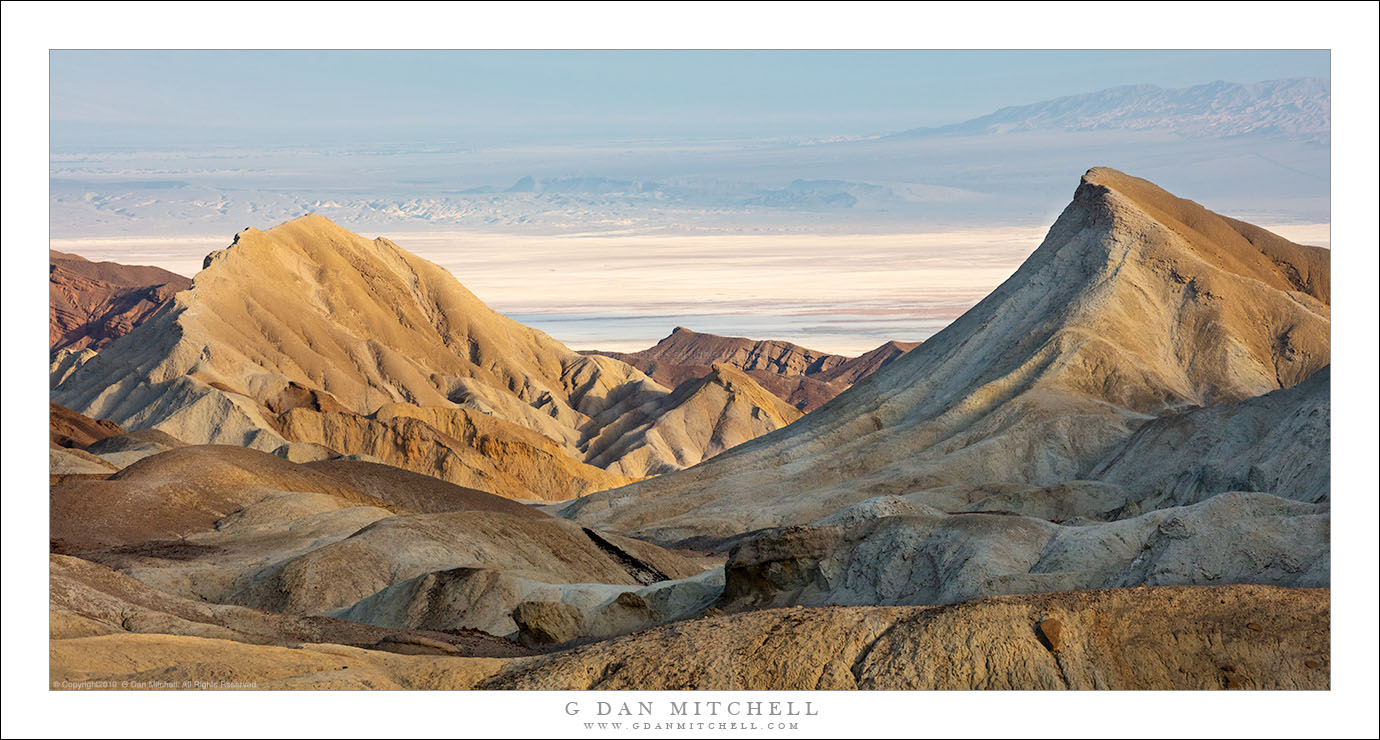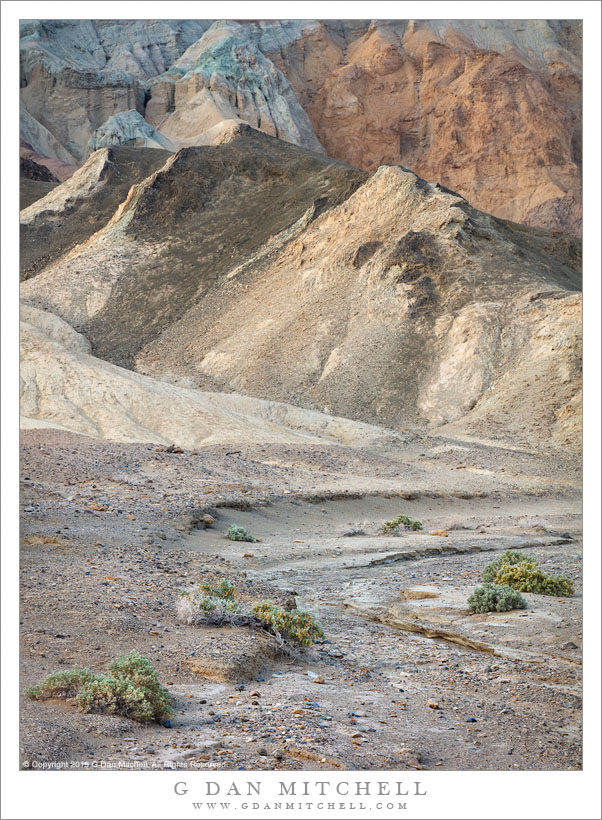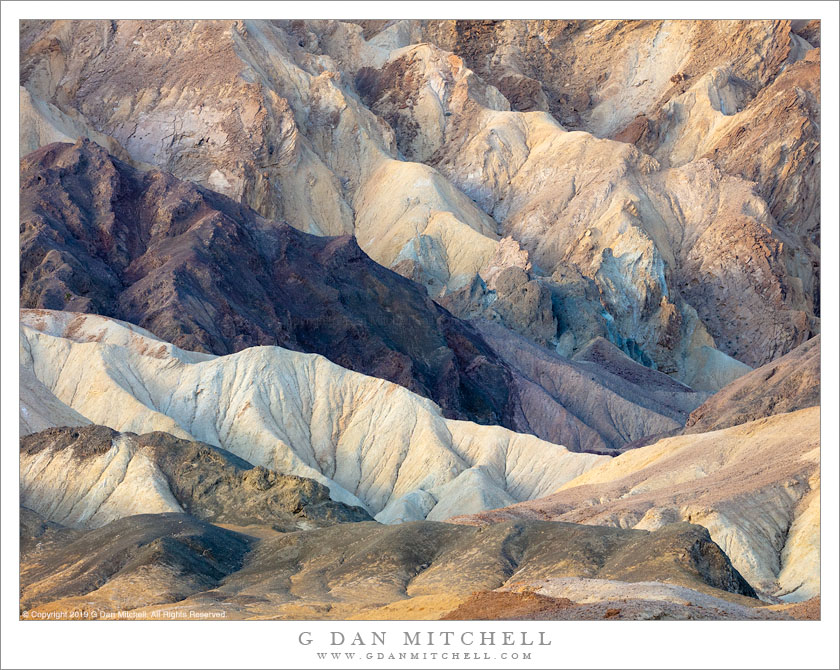
Badlands and Valley, Morning. © Copyright 2019 G Dan Mitchell – all rights reserved.
Eroded formations and Death Valley in morning light.
This is a location that I often go to in Death Valley when I want to photograph in the early morning… and I’m feeling a bit lazy and trying to avoid a long drive. The area is, for many folks, more or less a “drive through” site, but I’ve been going back there for years, lingering and exploring on foot and with my camera.
For the most part in this place you’ll find close-up views of beautifully eroded formations of contrasting colors, with lots of opportunities to photograph the “intimate landscape” of close to medium distance subjects. But in a few spots you can obtain a wider view and see far beyond this hills. To make this photograph I climbed a bit so that I could look over the nearby hills and out into the vast expanse of Death Valley in the early morning light.
G Dan Mitchell is a California photographer and visual opportunist. His book, “California’s Fall Color: A Photographer’s Guide to Autumn in the Sierra” is available from Heyday Books and Amazon.
Blog | About | Flickr | Facebook | Email
Links to Articles, Sales and Licensing, my Sierra Nevada Fall Color book, Contact Information.
Scroll down to leave a comment or question.
All media © Copyright G Dan Mitchell and others as indicated. Any use requires advance permission from G Dan Mitchell.



